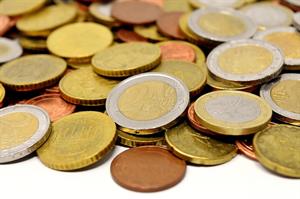PDF chapter test TRY NOW
Materials are classified into two types based on their electrical properties. They are,
- Conductors
- Insulators
1. Conductors:
In an electrical circuit, the conducting or connecting wires are used to connect the electrical components. These wires are usually made up of metals that allow the electric current to pass through them.
The materials which allow the electric current to pass through them are called conductors. All metals are good conductors of electricity. Human body is a good conductor of electricity.
Example:

Tap water

Coins

Iron nails
Certain metals like copper, aluminium , graphite and steel have very much less or negligible resistance. Hence, they are known as good conductors of electricity.

Copper, graphite and steel
Some other materials like nichrome, tin oxide offer high resistance to the electric current in a circuit. But still, these materials conduct electricity.
There is another category of material that does not conduct electricity. They are known as insulators.
2. Insulators:
The materials that do not allow the electric current to pass through them are called insulators. They are poor conductors of electricity.
Example:

Wood, rubber, paper, and plastic
The conductors and insulators play a major role in the safety of using electrical circuits.

Electric socket with plugs
Apart from these, there is a special type of material with a unique conducting behaviour known as semiconductors.
Semiconductors:
Semiconductors have both conducting and insulating properties. Some of the examples are silicon, germanium, gallium arsenide, etc. They are mainly used in diodes, computer peripherals, etc.

Diodes
Important!
Ohmic conductors are also known as linear conductors, which obey Ohm's law. All metals are good examples of ohmic conductors.
Non-ohmic conductors do not obey Ohm's law. Semiconductor devices are a good example of this type.
